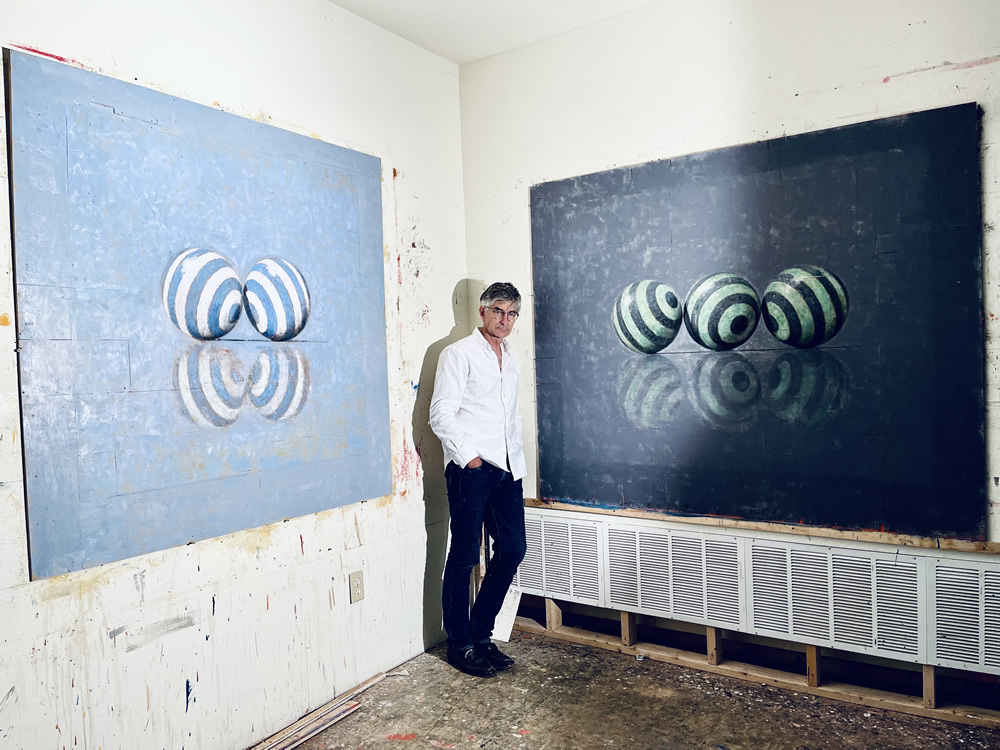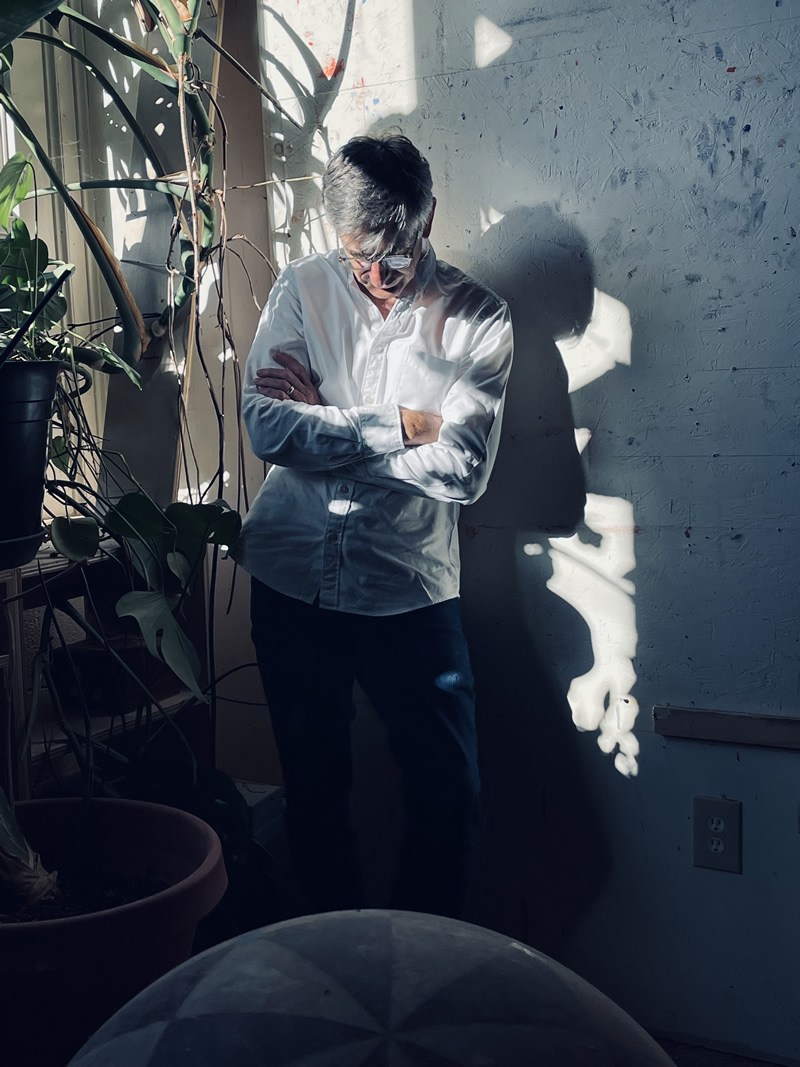 I’ve been making paintings of spheres for almost 40 years. Historically speaking, these paintings have two major artistic influences. On the one hand they owe a great deal to European still life painting of the (mostly) 17th century. The use of light and dark to create volume, the use of cast shadows to create space and the use of decoration to introduce color are just some of the devices well known to those who have spent time with Baroque still life painting from Spain or the Netherlands. Unlike traditional still life painting however, my own work is extremely spare and lacks any anecdotal information. There is no time of day, for example, nor is there a discernible scale to these objects, or any plausible narrative that could explain their arrangement. In this respect these paintings are influenced by a second, very different art movement; the “minimalist” work of the 1970’s and 1980’s. By “minimalist” I mean art from that era that prioritized material and was reductive in technique and style. I love the work of George Rickey and Agnes Martin for example. I’m most happy with simple and essential forms.
I’ve been making paintings of spheres for almost 40 years. Historically speaking, these paintings have two major artistic influences. On the one hand they owe a great deal to European still life painting of the (mostly) 17th century. The use of light and dark to create volume, the use of cast shadows to create space and the use of decoration to introduce color are just some of the devices well known to those who have spent time with Baroque still life painting from Spain or the Netherlands. Unlike traditional still life painting however, my own work is extremely spare and lacks any anecdotal information. There is no time of day, for example, nor is there a discernible scale to these objects, or any plausible narrative that could explain their arrangement. In this respect these paintings are influenced by a second, very different art movement; the “minimalist” work of the 1970’s and 1980’s. By “minimalist” I mean art from that era that prioritized material and was reductive in technique and style. I love the work of George Rickey and Agnes Martin for example. I’m most happy with simple and essential forms.
Seen from a “minimalist” point of view, if my paintings are not of baseballs, or bowling balls, if they are not arranged in a window or at a store or on a kitchen table— if they don’t tell any particular story—what are they? Maybe, they’re just balls, and like my favorite works by these more contemporary artists, the experience is in the form and in the art object itself, the plywood, the paint, the wax. Essentially what I’m doing is making a minimalist work with the tools of much older European painting. I want them both.
 Interestingly enough I find some similarities between these two very different eras of the history of art as both prioritize an exacting attention upon the object. Norman Bryson wrote a nice book about still life painting called “Looking at the Overlooked” which describes a practice of taking the time to see something carefully even if that thing is quotidian. My feeling is that looking (carefully) at the overlooked could apply equally to Zurbaran’s lemons as to Carl Andre’s bricks. In the case of still life painting, that careful attention is placed upon the painted object behind the picture plane, the bowl, the cup, the raspberry. In the case of the minimalist work of art our attention is drawn to the art object itself, the plywood box, the graphite line on canvas, the chunk of steel in the corner.
Interestingly enough I find some similarities between these two very different eras of the history of art as both prioritize an exacting attention upon the object. Norman Bryson wrote a nice book about still life painting called “Looking at the Overlooked” which describes a practice of taking the time to see something carefully even if that thing is quotidian. My feeling is that looking (carefully) at the overlooked could apply equally to Zurbaran’s lemons as to Carl Andre’s bricks. In the case of still life painting, that careful attention is placed upon the painted object behind the picture plane, the bowl, the cup, the raspberry. In the case of the minimalist work of art our attention is drawn to the art object itself, the plywood box, the graphite line on canvas, the chunk of steel in the corner.
In reference to this I should try and answer the question I’m most often asked; “Why just balls? Why not say, blocks or pyramids? Don’t you get bored?” The last one is easy because, yes, of course I get bored but I don’t think it’s because I only paint balls. Balls have been an effective subject for combining the two approaches to art described above. Because they are invented (I don’t work from observation, the balls can be arranged in any improbable way. They’re familiar and mysterious at the same time. They’re also an ongoing challenge, and in the best of times, an ongoing thrill to paint. There may come a time when I will say “I’m done” with the balls but for now, still, they’re still good. They’re enough.
— John Gibson, 2023

